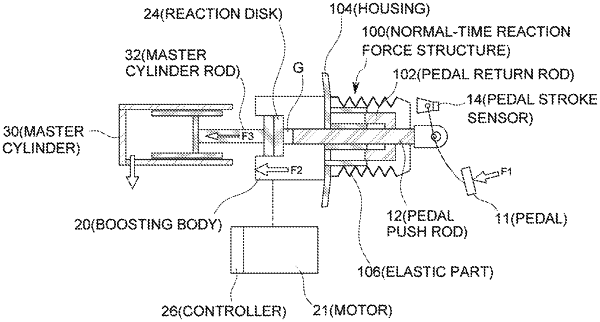| CPC B60T 13/162 (2013.01) [B60T 7/042 (2013.01); B60T 13/745 (2013.01); B60T 2270/60 (2013.01)] | 19 Claims |

|
1. A method of controlling an electric booster for improving heterogeneous braking properties, the electric booster including a reaction disk, a boosting body configured to perform a translational motion by receiving driving power of a booster motor and generate a clamping force to the reaction disk, and a pedal push rod connected to a pedal and configured to come into contact with the reaction disk, the electric booster being subjected to braking control according to a braking map, the method comprising:
a first braking control step of controlling, by a controller, and generating a reaction force at normal times in accordance with a pedal effort by compressing and expanding a fluid while moving the pedal push rod; and
a second braking control step of controlling, by the controller, and generating the reaction force in accordance with the pedal effort in a condition in which the reaction disk and the pedal push rod are in contact with each other by detecting a size of an air gap between the reaction disk and the pedal push rod,
wherein a normal-time reaction force structure used in the first braking control step includes a pedal return rod connected to one side of the pedal push rod and a housing into which the pedal return rod is inserted, the housing being configured to guide a movement of the pedal return rod, and
wherein a closed space for the fluid is formed between the pedal return rod and the housing.
|